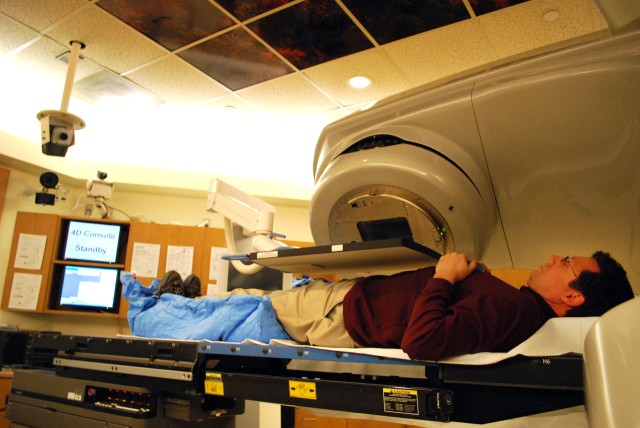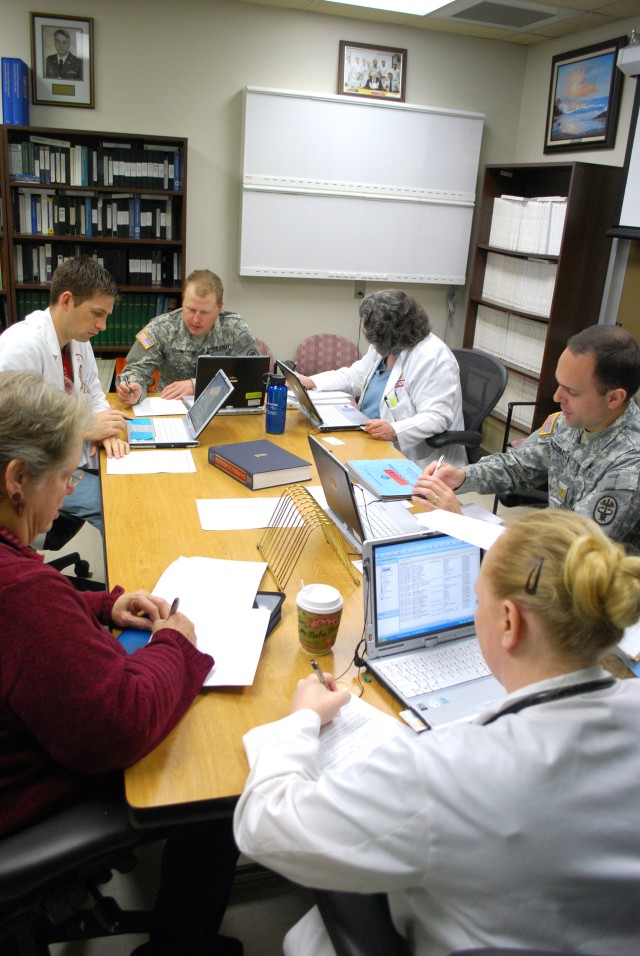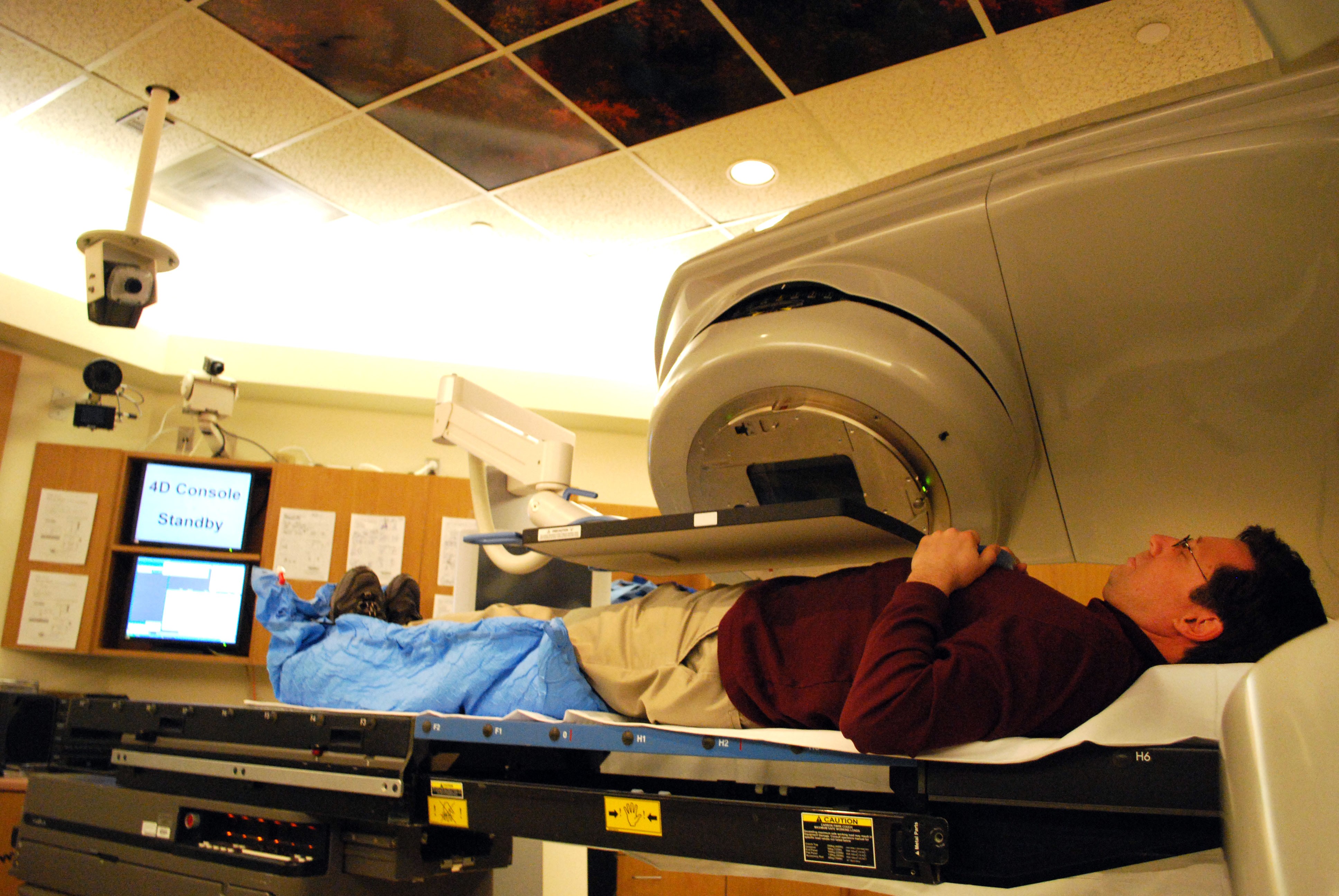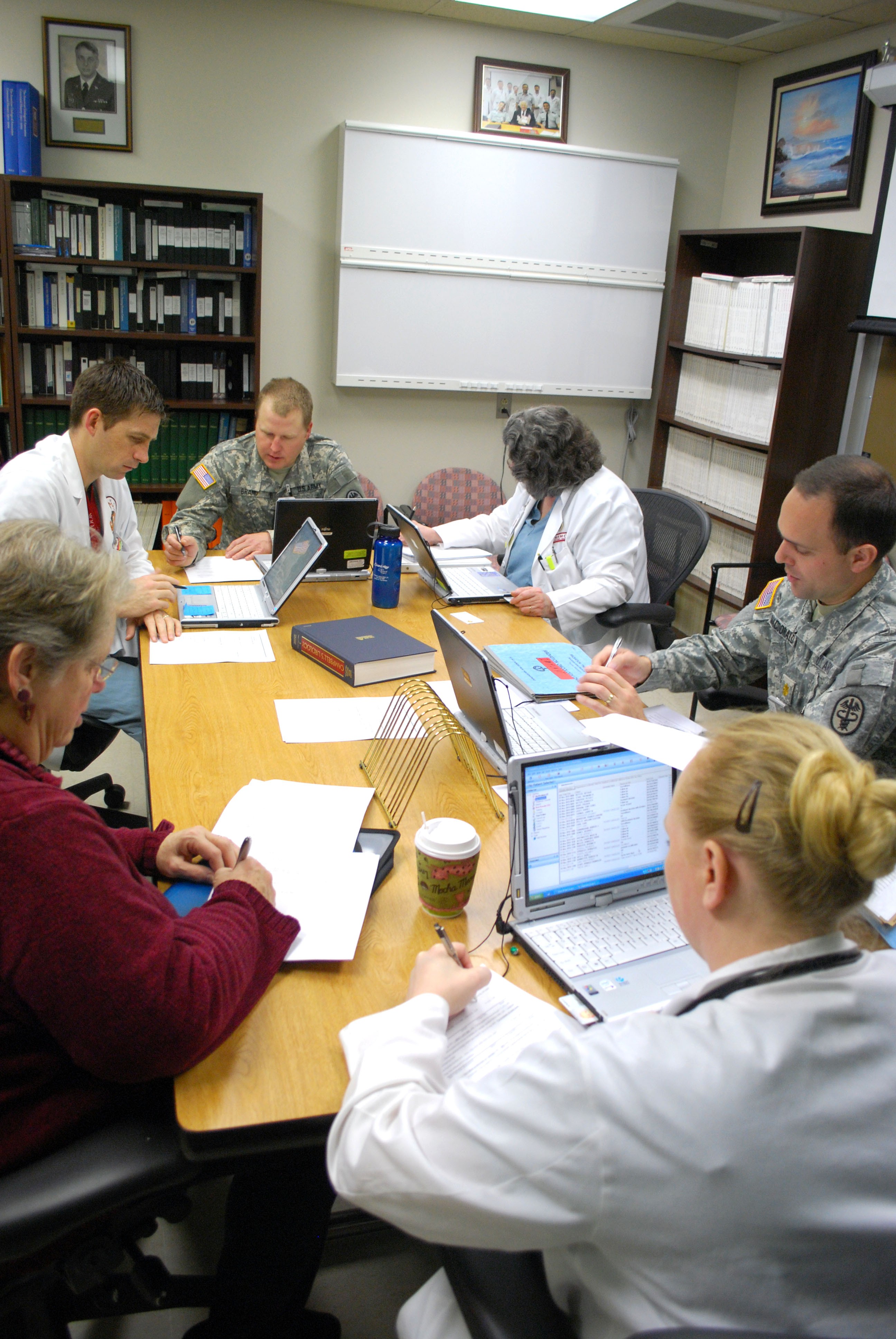MADIGAN ARMY MEDICAL CENTER, Wash. -- Staff members working in Madigan Army Medical Center\'s Department of Urology and Radiation Oncology Services know how scary it is when patients are told they have prostate cancer. To help reduce the shock and fear associated with cancer, these two departments created a Multidisciplinary Prostate Cancer Clinic to provide a simple one-stop shop for prostate cancer patients to discuss their treatment options, answer questions and get one-on-one face-time with the doctors and nurses who will have complete oversight of their care. Prostate cancer is the most commonly diagnosed malignancy at Madigan, and the clinic serves about 1,200 patients a year. The clinic is open to patients Wednesday mornings, and during the visit, the patient will discuss treatment options and future care with a urologic oncologist, radiation oncologist, case manager and social worker - and everyone in the room will have full knowledge of that patient's background, care, and current treatments. These factors give the patient improved care and better surveillance after treatment, said Maj. (Dr.) Timothy Brand, the clinic's chief. "We ensure that the patient is able to see everyone that they need to see in that one visit, not four separate visits." The group looks at four different areas originating from the Health Outcomes section focused on patient care: assessment, planning, facilitation and advocating. These four topics promote communication and collaboration between staff members, helping them stay on the same page and empower patients to be self-reliant and informed, said Genevieve Partain, the clinic's case manager. Partain maintains a master roster of all the patients enrolled in the clinic. She constantly updates the list whenever new patient information is documented, and in the same language the doctors use when transcribing their notes. All of this is to preserve patient continuity of care, she said. "We get feedback from the patients and it has been exceptionally positive," Partain added. Additionally, Madigan is a participating site in the Center for Prostate Disease Research Multi-center National Database Program. The program seeks to collect comprehensive data to learn more about prostate disease, particularly prostate cancer, so clinicians can develop more effective prevention, diagnostic and treatment strategies. This initiative is offered to the patients who are seen in the Multidisciplinary Prostate Cancer Clinic. Prostate cancer patients have multiple options for management of localized prostate cancer that include: Aca,!Ac da Vinci prostatectomy surgery: a minimally invasive, robotic-assisted surgical procedure that removes the cancerous prostate gland and related structures. Aca,!Ac Brachytherapy: a minimally invasive procedure where the doctor implants tiny permanent radioactive seeds (about the size of a grain of rice) into the prostate where they irradiate the cancer from inside the gland. Aca,!Ac External Beam Radiation Therapy: an Intensity Modulated Radiation System where radiation is delivered to the prostate from outside the body with a high energy X-ray beam. A newer system to Madigan is the Calypso 4D Localization System. This type of external beam radiation therapy provides clinicians continuous and real-time tracking of the prostate through permanent placement of Beacon transponders (small electronic devices) that are implanted in the prostate or prostate bed that keep the target in the path of the radiation beam at all times. By detecting the slightest tumor movement - and enabling the patient to be repositioned if necessary - the Calypso 4D Localization System helps clinicians deliver radiation directly to the tumor while avoiding healthy surrounding tissues and organs. Aca,!Ac Active surveillance: a program to manage low-risk cancer by closely monitoring the status of the cancer through periodic lab tests, exams, and re-biopsies. Intervention is reserved for when there is evidence of progression. The different treatment options are the true beauty of the Multidisciplinary Prostate Cancer Clinic, said Maj. (Dr.) Dusten Macdonald, a radiation oncologist with the clinic. The patient is diagnosed with prostate cancer and offered the four treatments, and he can choose the one that fits his biases or the one that has the most acceptable side effects. "We have the patients' best interests in mind, no matter which treatment the patient chooses," Macdonald said. Radiation Oncology Services is currently conducting three clinical research trials with the Calypso System, which are offered as a treatment option to those patients who are considering radiation therapy. Participants must be 40 years or older and have a current diagnosis of prostate cancer or have had their prostate removed but still require further treatment. For more information about use with the Calypso System at Madigan, please contact the Radiation Oncology Services at 253-968-2090.
Prostate cancer clinic provides patients one-stop shop for treatment options
By Mr. Lorin Smith (I Corps)April 13, 2010




Social Sharing